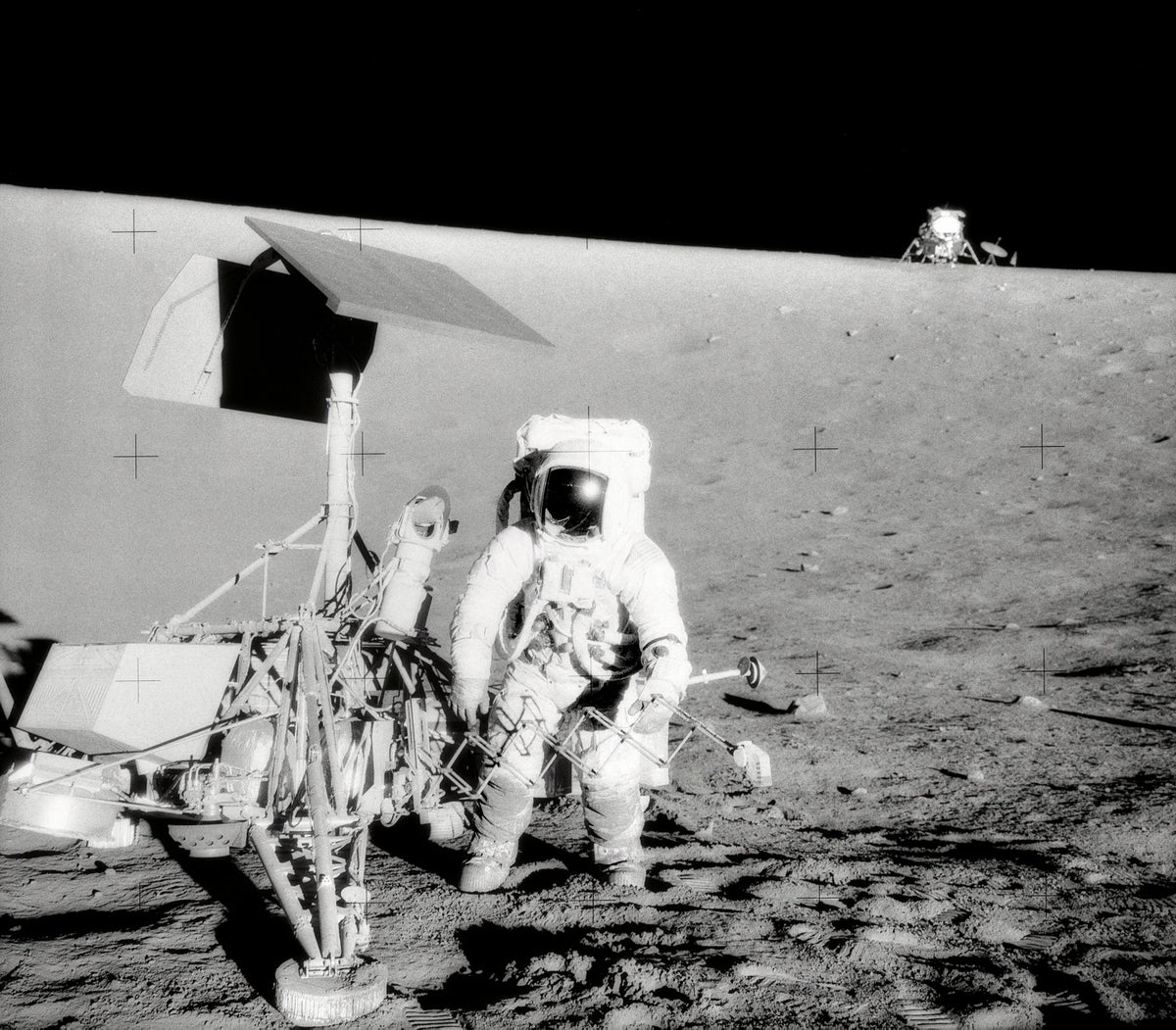A new theory of how rockets erode moon soil makes a startling prediction: powered lunar landings may fling around four to 10 times more material than previously thought. The work suggests that without sufficient precautions, rocket-lofted lunar dust would pose a serious sandblasting hazard to cargo and crew on the moon.
Pulverized into existence by rock-shattering meteoroid impacts, moon dust is nasty stuff. The jagged material can snarl up spacesuits’ joints, clog up radiators, and irritate astronauts’ eyes and lungs—and that’s just the stuff stirred up at low speeds. The moon lacks an atmosphere, so when a rocket lands there, no air slows the material that’s kicked up. Small dust particles accelerated by rocket exhaust can travel many kilometers or even escape the moon entirely.
Researchers have known for decades that rocket-flung dust can harm lunar equipment. In November 1969 the Apollo 12 lunar module landed about 160 meters (520 feet) from a NASA robotic probe called Surveyor 3, fulfilling a goal to demonstrate a pinpoint landing. But when Apollo 12 astronauts inspected Surveyor 3, they found that it was caked in dust. Samples of the probe returned to Earth showed severe sandblasting damage, including literal craters.



It’s unfortunate that such a dangerous material makes such a great portal surface.
Collecting it is dangerous but we’ve solved most of that through automation. Once it’s mixed with an adhesive is perfectly safe to use with proper PPE.